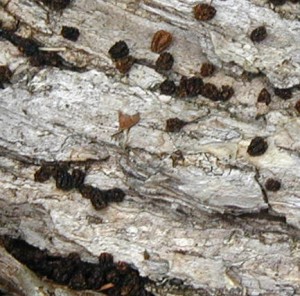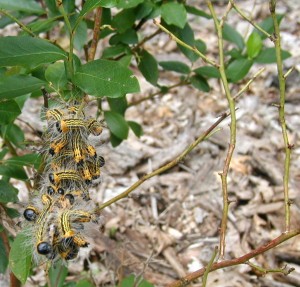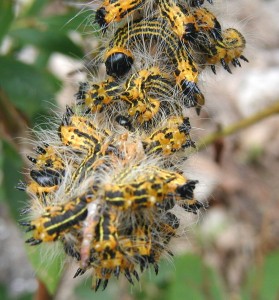It finally occurred to me a while back that we didn’t spend any time taking care of bag worm nests this year. Evidently, the manual destruction of bag worm nests really does work to remove them.
I’ve posted here before on bagging the bag worms. Essentially, the bags or tents are manually destroyed by physical means using a stick or plastic bag-wrapped hand so the caterpillars don’t have a home to go back to after ravaging the forest. Yes, by destroying the nests and the worms that get in the way, we are killing living things. Just remember that we’re not using pesticides to do so!
Not only are the nests unsightly, but the caterpillars are very destructive. They eat all the leaves from a chosen tree, especially cherries and other members of the Prunus genus. If the tree is in otherwise good health, it may be able to sprout a second set of leaves to carry on living for the rest of the season. If the same tree is hit two years in a row with the hungry mouths of bag worms, the tree may become too weak and not survive.
It’s typical that the woods that surround our house are a haven for the tent caterpillars or bagworms. We used to see the ugly tents in many trees, but this year there were none. There seem to be plenty of nests that appear high in trees, especially near the rivers, so that makes a sort of reservoir of worms for future infestations.
Does anyone else see good results by manual nest removal? I’m curious to see what may appear next year. If we do see more bag worm nests then, you can bet that they’ll also be destroyed.



